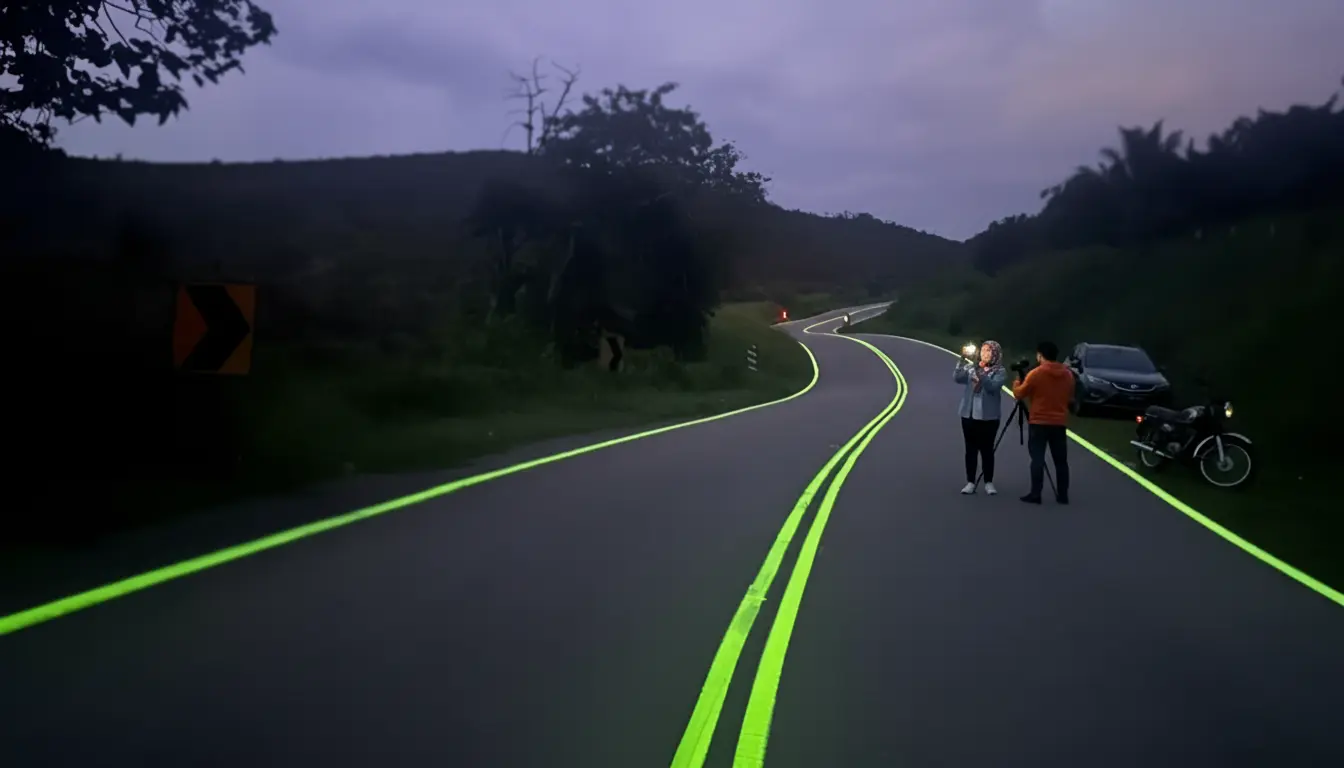When Bright Ideas Hit the Road
To make roads safer at night, Malaysia took a surprising leap and unveiled phosphorescent road markings designed to illuminate highways after dark, according to the Straits Times. This innovative pilot project debuted on a 245-meter (approx. 800 feet) stretch in the Hulu Langat district. Excitement ran high—for a moment, anyway. Only problem? The Malaysian government discovered, only after the fact, that this cutting-edge technology comes with a rather hefty price tag for a country like Malaysia.
Bringing Light Where None Existed
The whole idea behind the photoluminescent paint was to replace old-school reflective studs and bulbs—essentially anything that helps drivers see at night and in bad weather. Launched in 2023, the project won over drivers nearly instantly. That’s hardly surprising: before the new paint, those road segments were missing any sort of public lighting, making night driving, at best, tricky, and at worst, hazardous.
The Devil in the Details
According to Alexander Nanta Linggi, Malaysia’s Minister of Public Works, the photoluminescent paint emits a constant glow, which could be a game changer on rural roads that lack any lighting infrastructure. Yet, despite those clear benefits, the Malaysian government ran smack into a massive stumbling block: the eye-popping cost. Compared to more conventional road-marking techniques—that is, standard paint and lamps—the high-tech paint wasn’t just more expensive; it was in another league altogether. As reported by the website Paultan, the numbers are pretty stark:
- The glow-in-the-dark paint rings up at about 749 Malaysian ringgit (around $190) per square meter.
- Traditional road markings cost just 40 Malaysian ringgit (about $10) per square meter.
In other words, photoluminescent paint is nearly 20 times pricier than the usual approach. Cue collective budget shock.
When Vision Meets (Harsh) Reality
This sky-high price led authorities to seriously question whether rolling out the technology more widely was even feasible. Despite ongoing tests and a public that was mostly on board, by the end of last year the government began walking back its plans, clearly giving the brakes a gentle tap.
This Malaysian case shines a light (yes, pun intended) on a tough public infrastructure question: is such a steep cost a reasonable price to pay for better road safety? Judging by officials’ hesitation, it seems Malaysia’s leaders aren’t quite ready to foot the bill.

John is a curious mind who loves to write about diverse topics. Passionate about sharing his thoughts and perspectives, he enjoys sparking conversations and encouraging discovery. For him, every subject is an invitation to discuss and learn.






